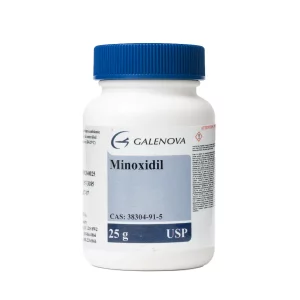Your cart is empty.
Your cart is empty.
Mounjaro, the brand name for the innovative medication tirzepatide, has garnered significant attention in the medical community. Originally developed to help manage type 2 diabetes by improving blood sugar control, its applications are expanding rapidly. Mounjaro is increasingly recognized for its effectiveness in promoting weight management and enhancing metabolic health, even in individuals without a diabetes diagnosis.
When considering Mounjaro dosing, patients should consult their healthcare provider to determine the appropriate regimen. This once-weekly injection, administered subcutaneously, represents a novel approach to addressing complex metabolic challenges. As discussions around Mounjaro vs Wegovy continue, many individuals weigh the differences in efficacy and mechanisms between the two treatments. Those interested in this option may seek trusted sources to buy Mounjaro under proper medical guidance.

Mounjaro distinguishes itself through its unique mechanism of action as a dual incretin receptor agonist. This means it simultaneously activates two crucial hormone pathways in the body. These hormones, glucose-dependent insulinotropic polypeptide (GIP) and glucagon-like peptide-1 (GLP-1), are naturally released by the gut in response to food intake. Their primary role is to signal the pancreas to release insulin, a hormone vital for regulating blood sugar levels. By mimicking the actions of both GIP and GLP-1 concurrently, tirzepatide achieves a more pronounced effect on glucose control and weight than GLP-1 agonists alone.
The weight loss benefits of Mounjaro stem from the combined effects of GLP-1 and GIP receptor activation. GLP-1 activation slows gastric emptying, creating a prolonged feeling of fullness that reduces food intake. Meanwhile, GIP activation aids in fat metabolism, boosts insulin sensitivity, and helps the body use glucose more effectively, preventing excess fat storage. These hormones reduce appetite and optimize energy balance, leading to significant weight loss.
To further clarify Mounjaro’s action, let’s examine the specific roles of the two key hormones it mimics:
GLP-1 (Glucagon-like Peptide-1):
GIP (Glucose-dependent Insulinotropic Polypeptide):
Mounjaro not only aids significantly in weight loss but also offers various health benefits. It effectively regulates blood sugar, making it valuable for individuals with prediabetes or insulin resistance.
Research is ongoing into its positive effects on metabolic health, including potential improvements in heart health, blood pressure, and cholesterol levels. It may also impact non-alcoholic fatty liver disease (NAFLD) and promote longevity by enhancing metabolic efficiency and reducing inflammation. Users often report increased energy levels, reduced cravings, and favorable changes in body composition, including decreased fat mass and increased lean muscle mass.

Mounjaro is given as a once-weekly subcutaneous injection, typically in the thigh, abdomen, or upper arm, using pre-filled pens for easy self-administration. It’s important to follow healthcare instructions for injection technique and site rotation. Dosage is often gradually increased under a provider’s guidance to minimize gastrointestinal side effects, starting low and adjusted based on individual response and tolerability.
Mounjaro’s potential benefits extend to a diverse group of individuals. Healthy adults seeking to proactively manage their weight, support their metabolic function, or improve their overall wellness may find it a valuable tool. It can also be beneficial for people at increased risk of metabolic syndrome, those with prediabetes, or individuals with a family history of chronic metabolic conditions. Furthermore, as research into its longevity-promoting effects evolves, Mounjaro may become a consideration for individuals pursuing modern preventive care strategies focused on extending healthspan.

When comparing Mounjaro to other popular GLP-1 receptor agonists, such as semaglutide (marketed as Ozempic® for diabetes and Wegovy® for weight loss), a key difference emerges. Mounjaro is the first medication to activate the GIP and GLP-1 receptors simultaneously.
While other medicines in the GLP-1 agonist class solely target the GLP-1 pathway, Mounjaro’s dual action represents a novel mechanism. This unique dual action is believed to be why Mounjaro has demonstrated potentially greater efficacy in weight loss and metabolic improvements in clinical trials compared to GLP-1 agonists alone.
The SURMOUNT and SURPASS trials support Mounjaro’s efficacy, showing significant weight loss, improvements in HbA1c levels, and positive changes in blood pressure and lipid profiles. Results are dose-dependent, with higher doses yielding better outcomes. The consistent benefits for various patient populations, both with and without diabetes, highlight Mounjaro’s broad potential.
Mounjaro may promote longevity and preventative health by enhancing metabolic efficiency, reducing chronic inflammation, and improving insulin sensitivity. These factors are associated with aging and related diseases, potentially delaying conditions like cardiovascular disease and type 2 diabetes. However, lifestyle interventions such as a balanced diet, exercise, and adequate sleep are essential and should complement any medical therapies.
Mounjaro mimics GLP-1 and GIP to regulate insulin, suppress appetite, and improve metabolism.
It reduces hunger and slows gastric emptying, helping people feel full longer and eat less.
No, it’s used for both type 2 diabetes and weight management in non-diabetic individuals.
Changes may be noticed within a few weeks, with continued improvements over 12–24 weeks.
Trials support short- and mid-term safety; longer-term studies are ongoing.


Minoxidil 25mg - Oral vasodilator for blood pressure management. Cardiovascular foundation support, pharmaceutical-grade standards, expert monitoring required.

Acarbose 50mg 120 Tablets - Gentle introduction to glucose control. Three-times daily with meals, precision-formulated tablet strength.

Dasatinib 20mg 60 Tablets - Flexible pediatric-strength dosing option. USP standards compliance, anytime administration, gradual increase capability.
Unlock savings on bundles and elevate your online experience today!